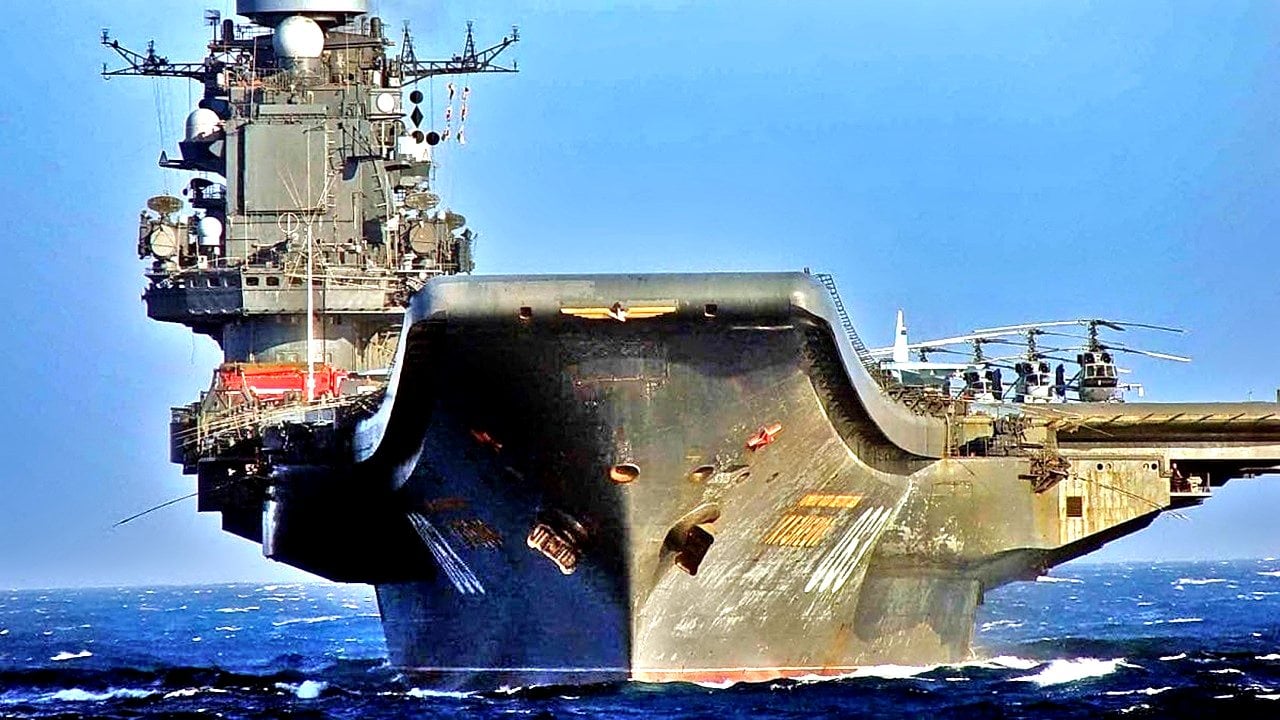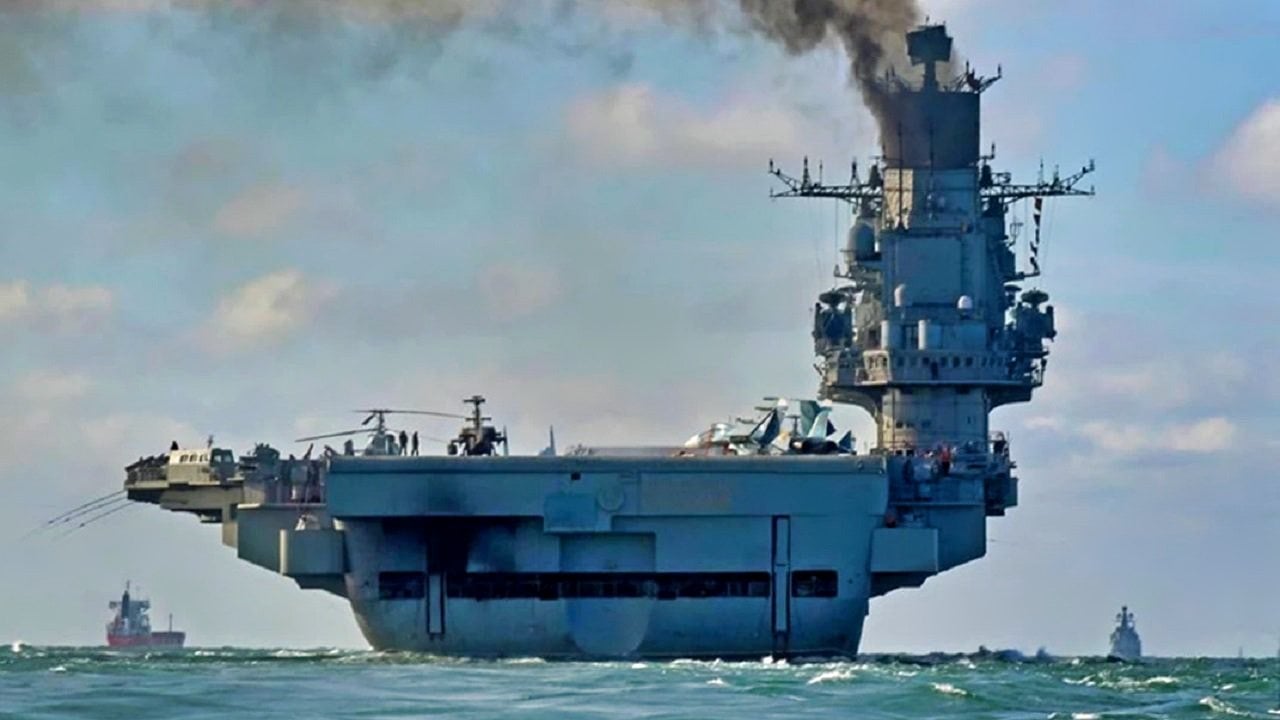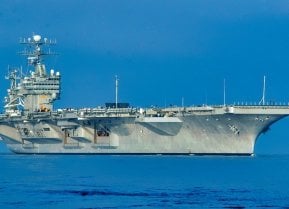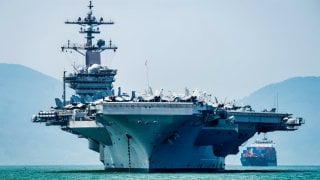Russia Failed to Build a Fleet of Aircraft Carriers for a Reason
Geographical challenges and a lack of resources minimized the USSR’s and, later, Russia's ability to develop aircraft carriers.
Why Russia never built a fleet of aircraft carriers: Russia’s sole aircraft carrier is often the butt of a joke, not considered to be the formidable threat the Kremlin would like to purport.
The Admiral Kuznetsov’s history is riddled with failures, complications and mishaps it has suffered from over its lifetime.
From fires and fallen cranes to faulty arresting wires and smoke problems, Moscow’s only carrier has spent the better part of its life undergoing refits on dry dock.
For most big navies like the U.S. or U.K., the absence of one aircraft carrier for a temporary time period is not the end of the world. When this happens, other carriers are deployed to take its place. However, Russia does not possess this opportunity, since it relies on a singular carrier to meet its naval requirements.
Considering the Kuznetsov’strack record, this ship is hardly meeting any requirements.
So why doesn't Russia have a big fleet of aircraft carriers in the first place?
The Soviet Union’s History with Aircraft Carriers
Geographical challenges and a lack of resources minimized the USSR’s ability to develop aircraft carriers.
During the height of the Cold War, the Soviet Navy was comprised mainly of submarines and smaller tactical ships. Engineers also developed the Kirov and Slava-class guided-missile carriers, which were quite large and heavily armed.
When conceptualizing aircraft carriers though, Soviet strategies paid little attention to these assets. Since the USSR prioritized countering Western submarines, its Navy required larger surface vessels capable of carrying anti-submarine helicopters. The Moskva-class helicopter carriers were produced to fulfill this need, followed by the introduction of the Kiev class in the early 1970’s.
By this time, the Soviets established Project 1153 Orel (Eagle), which centered around developing an aircraft carrier capable of housing fixed-wing fighter aircraft. However, the program was canceled quickly as the Navy’s strategic priorities shifted.
By 1980, the USSR acquired the Tbilisi which was renamed the Admiral of the Fleet of The Soviet Union Kuznetsov. Over the span of 7 years, the aircraft carrier’s name was changed four times. The chaos surrounding the ship’s designation perhaps extended into its functioning.

Introducing the Admiral Kuznetsov:
Named to honor a revered USSR Admiral Nikolay Gerasimovich Kuznetsov, the carrier officially commissioned into the Soviet Navy in the mid-1980s.
Like the USSR’s other vessels, the carrier’s design centered around supporting and defending missile-carrying submarines and other missile-carrying aircraft in the Navy. The Kuznetsov is equipped with two dozen rotary-style vertical launch systems, which can fire a staggering 192 SA-N-9 Gauntlet point air defense missiles.

The Drive has detailed other armaments that the Kuznetsov sports: “In addition, the ship bristles with a virtual wall off close-in weapon systems (CIWS), includingsix AK-630 cannons and no less than eight (notoriously formidable) Kashtan missile/cannon CIWS systems. The ship even sports its own anti-submarine defenses with a pair of UDAV-1 anti-submarine/anti-torpedo rocket systems. Although the UDAV-1 system is a less complex concept, American carriers are just beginning to field a capable defense against torpedoes today.”
The Kuznetsov’s History is Tragic:
Despite being armed to the teeth, the Kuznetsov has a marred history. From the black Mazut smoke that powers the carrier and allows enemy vessels to spot the ship from miles away to improper boiler and piping installations, its design is truly subpar. When the Kuznetsov was first deployed to Syria in 2016, faulty arresting wires on its flight deck resulted in the crash of a MiG fighter jet.

Following this incident, all Russian aircraft were forced to take off and land out of the water, essentially rendering the carrier as useless. The ship has been under “maintenance” and repairs for nearly a decade, which hasn’t stopped the mishaps and tragic accidents from cursing it.
A fallen crane and a few onboard fires have resulted in the injury and even death of Russian sailors over the last few years.
What Has Prevented Russia from Acquiring other Aircraft Carriers?
Clearly, Moscow’s sole aircraft carrier is not performing up to standards. Despite this, Russia continues to prioritize other defense needs. During the Cold War, an emphasis was placed on the Soviet’s nuclear triad. Therefore, nuclear-armed submarines were included in the USSR’s budget - not large aircraft carriers. Once the USSR collapsed, a lack of financial means further pushed Russia away from acquiring a more extensive fleet of carriers.
However, Moscow has not completely disregarded the possibility of building up its carrier fleet. At one point, President Dmitri Medvedev indicated that Russia would construct and operate at least six aircraft carriers by the year 2025. Obviously, Russia has not met this goal.
Now that the country is fully entrenched in its ongoing invasion of Ukraine, the potential for a change in Moscow’s carrier approach in the near future is next to none.
About the Author
Maya Carlin is an analyst with the Center for Security Policy and a former Anna Sobol Levy Fellow at IDC Herzliya in Israel. She has by-lines in many publications, including The National Interest, Jerusalem Post, and Times of Israel. You can follow her on Twitter: @MayaCarlin.
All images are Creative Commons.


